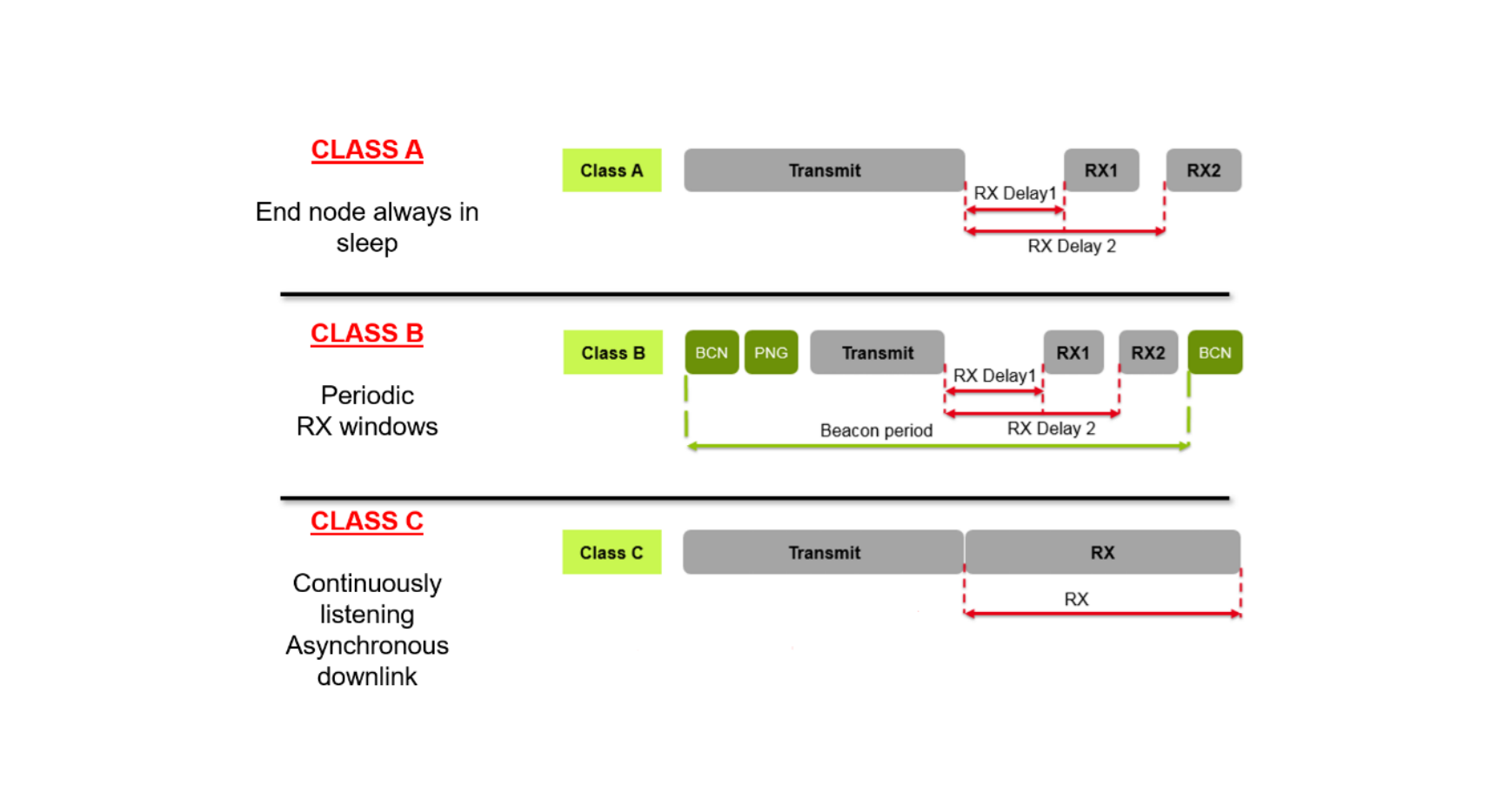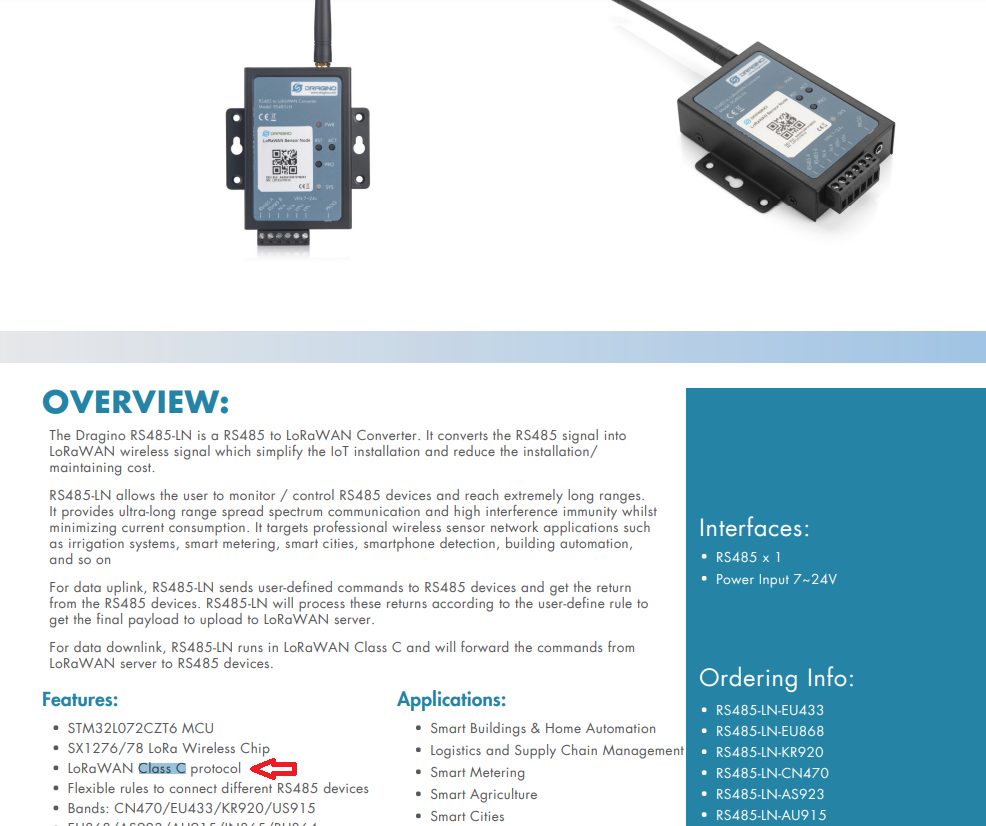LoRaWAN has three Device Classes for LoRaWAN nodes for three deployment scenarios:
- Class A: Mainly used by LoRaWAN nodes with battery. The nodes are in deep sleep mode most of the time to save battery.
After wake up, they will send an uplink of sensor data to gateway and server. They will listen to a downlink from gateway and server twice in RX1 and RX2 slot. - Class B: Used for beacon nodes. The nodes will have an extra periodically listen slot compared to Class A. Class B nodes are less available in the market.
- Class C: Manily used by LoRaWAN nodes with main power. The nodes are in operation mode all the time.
They can send uplinks of sensor data anytime. And they can receive downlink commands from server anytime in continuous RX slot.

You can check the datasheet of your LoRaWAN nodes to know they use Class A or B or C.
- In the below photo, you can see Dragino RS485-LN uses Class C. It uses main power, can send uplinks anytime and receive downlink commands anytime.

Enjoy the weekend. 🙂
Want to test?
Subscribe Easy LoRaWAN Cloud to try this guide on your LoRaWAN gateways and nodes.
We will help you to get started and troubleshooting.
Need help?
We can debug, write codec and remote support for your LoRaWAN devices.



I seldom see Class B for LoRaWAN devices.
Yes, you are right.
Devices with Class A and C are more common.
However, we support class A, B and C.
https://iotthinks.com/easylorawan-cloud/